Basics of differentials amplifiers
1/39
Earn XP
Name | Mastery | Learn | Test | Matching | Spaced |
|---|
No study sessions yet.
40 Terms
Operational Amplifier
is an analog circuit block that takes a differential voltage input and produces a single-ended voltage output.
two high-impedance inputs and a low-impedance output port
three terminals of op amps
inverting input
denoted with a minus sign
non-inverting sign
uses a positive sign
Operation amplifiers
work to amplify voltage differential between the inputs, which is useful for variety of analog functions including signal chain, power and control applications
Voltage amplifiers
voltage in - voltage out
Current Amplifiers
current in - current out
Transconductance amplifiers
voltage in - current out
Transresistance amplifiers
current in - voltage out
Operational amplifier schematic
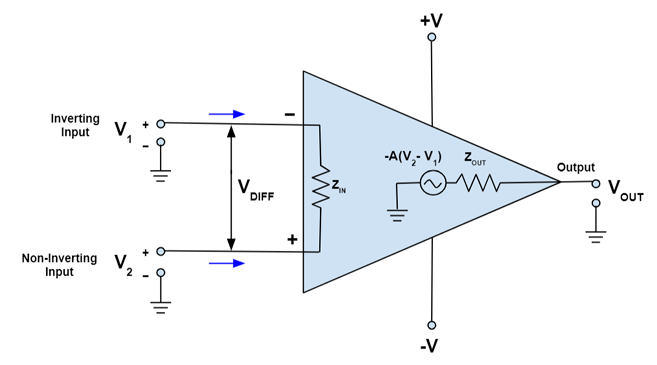
Open-loop gain
the measure of the gain achieved when there is no feedback implemented in the circuit
open-loop gain
the feedback path or loop is open
large (10000+)
to be useful in itself, an open loop gain often must be …
Voltage comparators
compare the input terminal voltages, also can drive the output to either positive or negative rails, even with small voltage differentials
high … temperature, process, and signal variations
____ open-loop gains can be beneficial to closed-loop configurations, as they enable stable circuit behaviors across ______
The input of op-amps
generally have high impedance, which has an ideal value of infinity, which also minimizes loading of the source.
the output of op-amps
ideally has zero impedance, however it typically has a small value which determines the amount of current it can drive and how well it can operate as a voltage buffer
Frequency response and bandwidth (BW)
An ideal op amp would have an infinite bandwidth (BW), and would be able to maintain a high gain regardless of signal frequency. However, all operational amplifiers have a finite bandwidth, generally called the “-3dB point,” where the gain begins to roll as frequency increases. The gain of the amplifier then decreases at a rate of -20dB/decade while the frequency increases. Op amps with a higher BW have improved performance because they maintain higher gains at higher frequencies; however, this higher gain results in larger power consumption or increased cost.
Gain Bandwidth product (GBP)
s a product of the amplifier’s gain and bandwidth. also a constant value across the curve, and can be calculated with: Gain x Bandwidth
Gain Bandwidth product (GBP)
is measured at the frequency point at which the operational amplifier’s gain reaches unity. This is useful because it allows the user to calculate the device’s open-loop gain at different frequencies
Gain Bandwidth product (GBP)
is generally a measure of its usefulness and performance, as op amps with a higher _____ can be used to achieve better performance at higher frequencies.
negative feedback
is implemented by feeding a portion of the output signal through an external feedback resistor and back to the inverting input
negative feedback

Negative Feedback
is used to stabilize the gain
closed loop gain
can be determined via external feedback components that can have higher accuracy compared to the operational amplifier’s internal components. This is because the internal op amp components may vary substantially due to process shifts, temperature changes, voltage changes, and other factors
closed loop gain
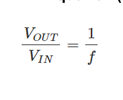
advantages to using an operational amplifier.
Operational amplifiers often come in the form of an IC, and are widely available, with countless selectable performance levels to meet every application’s needs. Op amps have a broad range of usages, and as such are a key building block in many analog applications — including filter designs, voltage buffers, comparator circuits, and many others. In addition, most companies provide simulation support, such as PSPICE models, for designers to validate their operational amplifier designs before building real designs.
limitations to using operational amplifiers
include the fact they are analog circuits, and require a designer that understands analog fundamentals such as loading, frequency response, and stability. It is not uncommon to design a seemingly simple op amp circuit, only to turn it on and find that it is oscillating. Due to some of the key parameters discussed earlier, the designer must understand how those parameters play into their design, which typically means the designer must have a moderate to high level of analog design experience.
Voltage follower
V_OUT=V_IN
This circuit does not generally require external components, and provides high input impedance and low output impedance, which makes it a useful buffer. Because the voltage input and output are equal, changes to the input produce equivalent changes to the output voltage.

Inverting operational amplifier
the op amp forces the negative terminal to equal the positive terminal, which is commonly ground. Therefore, the input current is determined by the VIN / R1 ratio
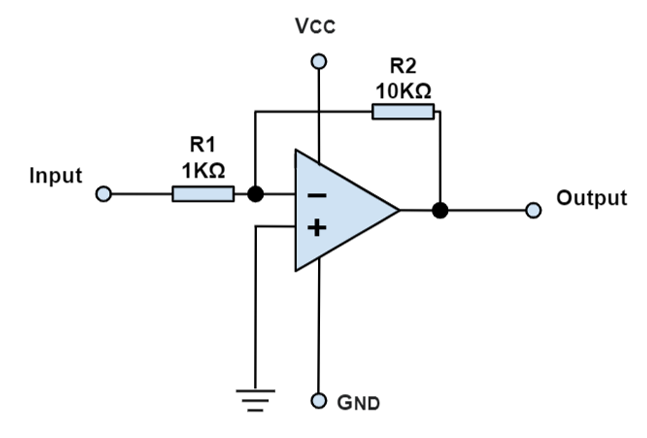
Inverting operational amplifier
In this configuration, the same current flows through R2 to the output. Ideally, current does not flow into the operational amplifier’s negative terminal due to its high ZIN. The current f lowing from the negative terminal through R2 creates an inverted voltage polarity with respect to VIN.

Non-inverting operational amplifier
the input signal from the source is connected to the non-inverting (+) terminal
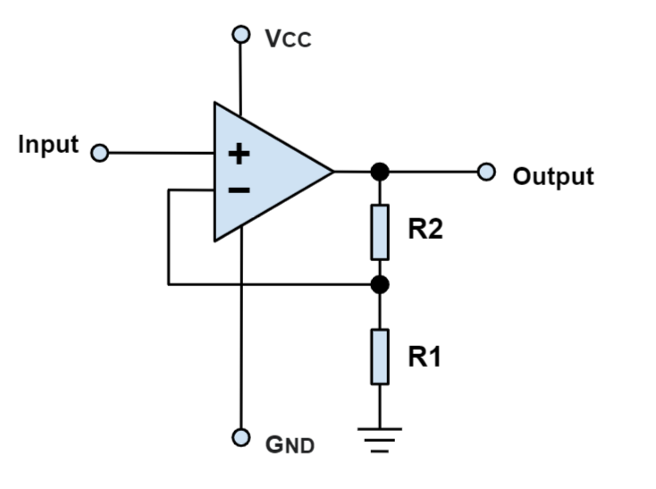
Non-inverting operational amplifier
The operational amplifier forces the inverting (-) terminal voltage to equal the input voltage, which creates a current flow through the feedback resistors. The output voltage is always in phase with the input voltage, which is why this topology is known as non-inverting. Note that with a non-inverting amplifier, the voltage gain is always greater than 1, which is not always the case with the inverting configurations.

Voltage comparator
compares voltage inputs, and drives the output to the supply rail of whichever input is higher.
Voltage comparator
This configuration is considered open loop operation because there is no feedback.
Voltage comparator
have the benefit of operating much faster than the closed-loop topologies
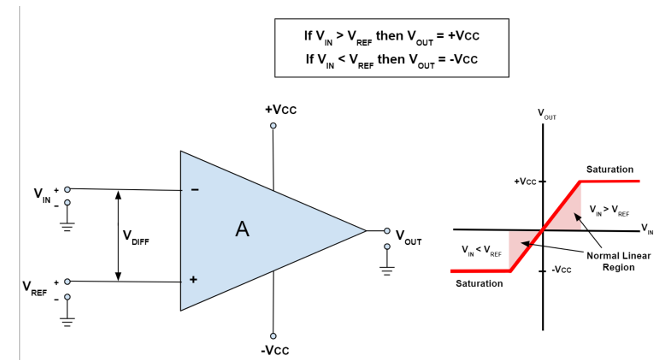
choose an op amp that can support your expected operating voltage range.
consider the amplifier’s GBP. If your application needs to support higher frequencies, or requires a higher performance and reduced distortion, consider op amps with higher GBPs.
consider the power consumption
How to Choose an Operational Amplifier for Your Application
Operational amplifiers
are widely used in many analog and power applications.
widely understood, well documented and supported, and are fairly easy to use and implement.
The benefits of using an op amp are that they are generally …
voltage buffers, creating analog filters, and threshold detectors
Op amps are useful for many applications, such as …